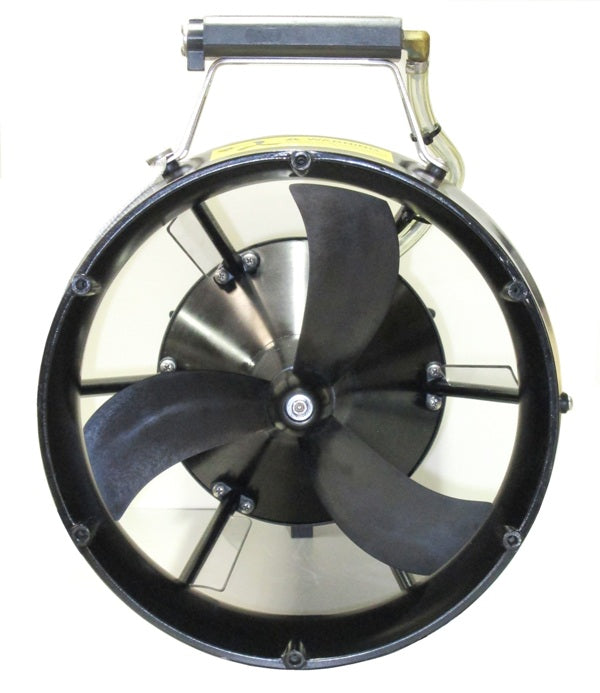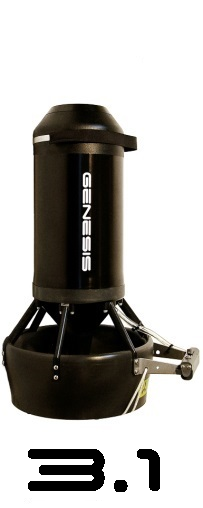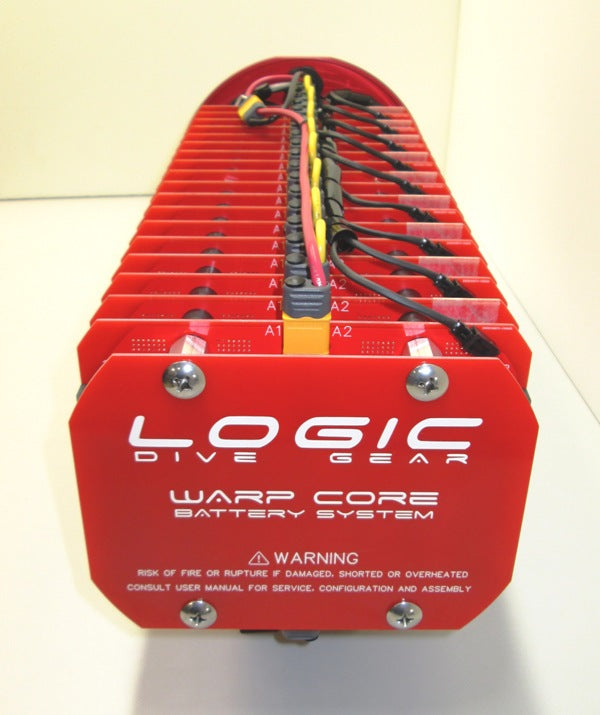1
/
of
9
Logic Dive Gear
Genesis 3.0 DPV (Read Description)
Genesis 3.0 DPV (Read Description)
Regular price
$100.00
Regular price
Sale price
$100.00
Shipping calculated at checkout.
Quantity
Couldn't load pickup availability
NOT AVAILABLE FOR ONLINE PURCHASE, PLEASE CONTACT THE SHOP IF INTERESTED: 904-206-7102
To Purchase:
- purchase the "Genesis DEPOSIT" for $100 and complete your checkout.
- Be sure to provide all information at checkout (shipping address, phone number, email address)
- $100 deposit is NON-REFUNDABLE, please only purchase the deposit if you plan to buy a DPV.
- We will contact you directly to coordinate bank transfer or zelle payment for the remaining balance. If you choose not to purchase, you may cancel but you will forfeit your $100 deposit.
The new Genesis 3.1 is the ultimate all around DPV and is still passenger airline legal WITHOUT you having to hand carry the batteries! At only 34lbs and 24 inches long, it is capable of speeds from 30 to over 300 ft/min and a cruise range of over 8 miles, making it ideal for shore or boat dives, while still providing plenty of range for cave diving. Single hand control of both ON/OFF and the infinitely variable speed makes it the easiest scooter to operate and leaves your second hand free at all times. The external recharge capability means you don’t have to open your scooter between dives to charge it and the magnetic shaft coupling ensures a lifetime of operation with no shaft seal maintenance or failures. The variable speed control is also magnetically coupled, so there are no dynamic seals anywhere on this awesome little scooter. The new electronics in the 3.1 provide LED feedback of battery charge remaining and allow the user to adjust the motor parameters to their liking. The new motor is also more power efficient, for more range, and quieter.
3.1 SPECS
Weight – 34lbs (15.4kg)
Length – 24.5in (61.7cm)
Max Thrust – over 90lbs (41kg) [400N]
Run Time at Max Speed – 50 minutes
Run Time at Min Speed – 16 hours
Approx. Range at Max Thrust – 2.7mi (4.3km)
Approx. Range at 2 knots – 6.4mi (10.3km)
Approx. Range at 150fpm – 8.7mi (14.0km)
Standard Depth Rating – 660ft (200m)
Optional Depth Rating – 1000ft (300m)
Li-ion Battery Capacity – 850Wh
Battery Voltage – 64.8VDC nominal
Charger Input Voltage – 100-240VAC
Recharge Time – 4 hours
**MUST CONTACT FLIPPERS DIVING DIRECTLY TO ORDER** lead time is generally 60 days and payment must be done through bank transfer, zelle or cashiers check (no credit card payments). Call for details and ordering process.
The Genesis 3.2 was built with long range exploration in mind and it is also passenger airline legal without having to hand carry the batteries. We pack enough battery into this baby to go up to 17 miles at realistic speeds and it still weighs less than 50lbs. The primary use for the Genesis 3.2 is deep cave exploration and long range open water exploration. The unmatched high speed of the Genesis DPVs allow a diver to rocket past the end of line in deep caves and get back just as fast, minimizing the decompression obligations acquired on deep dives. It is equally comfortable in the open ocean, where you can explore miles of ocean at a time. At its slowest speed it can run continuously for over 30 hours and cover over 20 miles. The new electronics in the 3.1 provide LED feedback of battery charge remaining and allow the user to adjust the motor parameters to their liking. The new motor is also more power efficient, for more range, and quieter.
3.2 SPECS
Weight – 49.5lbs (22.5kg)
Length – 33.6in (85.2cm)
Length – 33.6in (85.2cm)
Max Thrust – over 90lbs (41kg) [400N]
Run Time at Max Speed – 100min
Run Time at Min Speed – 30 hours
Approx. Range at Max Thrust – 5.4mi (8.6km)
Approx. Range at 2 knots – 12.4mi (20.6km)
Approx. Range at 150fpm – 17.4mi (28.0km)
Standard Depth Rating – 660ft (200m)
Optional Depth Rating – 1000ft (300m)
Li-ion Battery Capacity – 1700Wh
Battery Voltage – 64.8VDC nominal
Charger Input Voltage – 100-240VAC
Recharge Time – 8 hours
External recharge connector – Rated for 10,000 PSI, it is the first of many features in the design that are best described as overbuilt. There is no power at the pins when the charger is not installed so the pins will not short out if the cover is left off when put in the water or removed underwater. Additionally, if the cover is not installed, the motor controller will not be enabled to run, increasing safety and stopping the quiescent power drain from the batteries.
Advantage – By not opening the scooter body to recharge the batteries, the risk of seal damage and wear on the battery connectors from repeated unmating and mating is reduced. Additionally by not repeatedly opening the body, humidity is not allowed in to condense when the colder scooter is opened in a warmer, humid environment.
Pressure and vacuum test port – Can also be used to vent pressure differentials from altitude changes. The Genesis body can be tested for both vacuum and pressure since there is no shaft seal to vent out or spring latches to stretch open during pressure testing. Standard SAE -4 port (same as a high pressure port on a regulator).
Advantage – There is no need to spend hundreds of dollars on an extra tool for testing and should a leak occur, its location can be quickly determined with a bubble test under pressure.
Plastic bumper on nose – Prevents damage to anodizing when placed nose down in tank racks on the boat ride out or when stood on the nose to remove the tail.
Advantage – Better protection of corrosion control finish.
Hard anodized 6061 aluminum body – No welds and no stainless steel. Welding heat treated aluminum reduces its strength to almost half in the heat affected zone. Having stainless steel fastened to aluminum causes galvanic corrosion due to dissimilar metals and crevice corrosion in treaded holes.
Advantage – Stronger and much less prone to corrosion.
Proper O-ring grooves – Two o-rings (same size) provide redundancy at the body to tail connection. The grooves follow industrial standard dimensions to prevent over-compression that results in damage to the o-ring and premature failure. Other designs that clamp an o-ring between two flat faces or wedge it into a corner with a simple chamfer can quickly damage a seal when that o-ring has to react the entire crushing force between the body and tail at depth.
Advantage – Longer seal life and reduced possibility of seal failure.
Highly integrated tail section – The Genesis motor is shrink-fit into the aluminum tail cone, providing the most direct path to dump heat from the motor to the water. The motor controller is also heat sunk to the tail cone and the Genesis can be run at full power continuously, even beyond the capacity of the 1700Wh battery, without overheating. Every scooter is burn tested, non-stop at full power for one full battery cycle before shipping. The magnetic coupling eliminates the dynamic shaft seal, which is the most likely failure point on every other DPV currently available. Due to the magnetic coupling the motor bearings never experience axial loading and do not require replacement on a regular basis. The bearings for the propeller shaft are full ceramic with a 10,000 hour design life and the ceramic material is harder than almost any particles that may get in them, including sand. Additionally, the intelligent motor controller monitors battery voltage and will limit the power to 50% when the battery is at the last 8-10 percent of its capacity. (50% is still more thrust than most DPVs are even capable of)
Advantage – More efficient and reliable design, eliminating the major leak point and requiring less maintenance. Propeller can be removed in seconds and without tools to clear ingested fishing or spool line.
Fully engineered propeller and nozzle design – The nozzle, propeller and motor were engineered to work together as a system for maximum efficiency. A nozzle needs to be more than just a funnel for water flow and protection from the rotating blades. The Genesis nozzle provides thrust, just like an airplane wing provides lift. At full power static thrust, about 35% of the total thrust is generated solely by the pressure differential from the outside to the inside of the nozzle. The streamlined design avoids turbulence that reduces thrust and causes the flow out the back of the nozzle to rapidly disperse. The result is higher thrust at a given power and a flow column that stays consolidated longer enabling the DPV to be operated closer to silty bottoms or cave walls without disturbing them and reducing visibility. The nozzle is a foam material that adds buoyancy to the tail section, so that the body can be shorter and the nozzle outer diameter is 1.15 inches smaller, making a more compact DPV. The Genesis 600 can be fitted into a single shipping case that meets normal airline baggage restriction.
Advantage – More efficient power conversion and less likely to disturb silt in a cave. Smaller overall size to fit through tight openings and easier to transport on passenger aircraft.
One hand operation of all controls – The ON-OFF trigger, trigger lock and speed control can all be operated with a single hand. The trigger can be easily locked OFF for safety or locked ON for long cruises with a flick of the finger. The variable speed lever is easily operated with the thumb on the fly instead of having to reach for an adjusting knob on the body.
Advantage – Easier to operate.
Infinitely variable speed control – Any speed can be set and the motor will gently accelerate up to that speed instead of jerking the diver when the trigger is pulled. The speed can be adjusted from zero to 100% while moving and there is a sufficient dead band at zero speed that acts as a second safety to locking the trigger OFF. No missed shifts or multiple clicks to get to the speed you want and it is easy to dial in the exact same speed as your dive buddy.
Advantage – Easier on the diver at start-up and more controllable with redundant safety features.
DOES NOT QUALIFY FOR FREE SHIPPING OR USE OF ANY DISCOUNT CODES. MUST CONTACT STORE DIRECTLY TO COORDINATE ORDERING.
Share



















